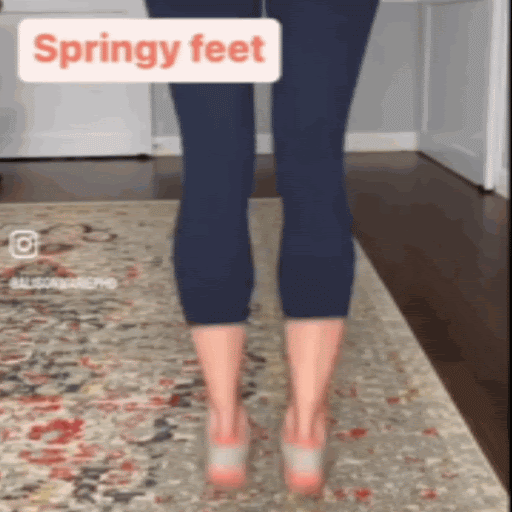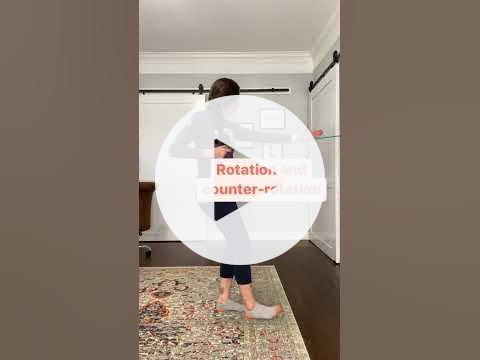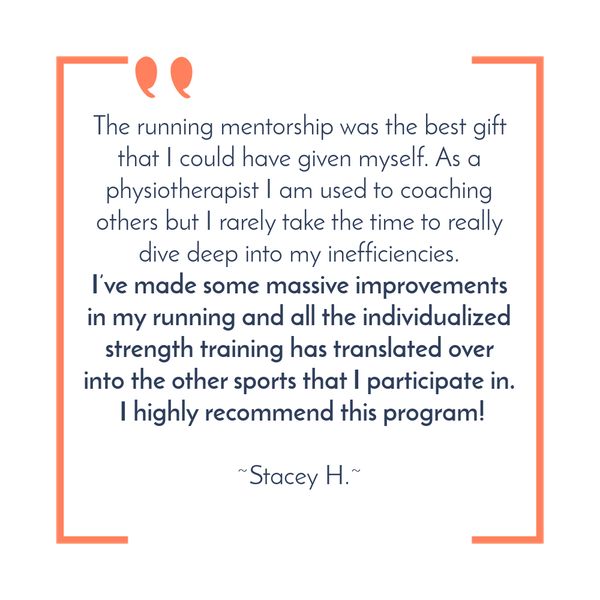
5 Skills Female Runners Need to Master to Create The Ideal Running Stride
May 10, 2023What Does the Ideal Running Stride Look Like? And How We Can Obtain It!
I’ve been thinking lately about organizing the Women’s Running Academy strength training more in the framework of skills we should execute when running. Our stride is something that can be perfected, so by working on specific skills we can work toward our ideal running stride.
I posted this on IG the other day. There are a few more tangents I could go off on with this but here are a few of the most important fundamentals:
5 Important Skills for Runners That Will Create Their Ideal Running Stride:
1- Orient the pelvis without squeezing your glutes.
A big piece of this is finding those proximal hamstrings. As you know I love anything with a wall reference for that! Here's a favorite of mine:
Why should we care? We want a good stack - ribcage over pelvis - when we run so that we can efficiently transfer force and move freely in all planes of motion (this is especially important for hip extension and rotation).
The other piece of the stack is what’s happening above the pelvis at the rib cage. We’ve talked a lot about how our ribs need to move for rotation, but areas of expansion and compression also affect how well we organize ourselves from above. (More on this soon!) The better the stack the closer we are to our ideal running stride.
2- Stand on one leg… like really on it. That means being able to internally rotate into that hip and load your glutes through the length.
Many of my clients had questions, so I made another video yesterday explaining what I mean by REALLY standing on it. IG was being IG and the captions came out all weird so it’s probably a good idea to watch it with sound.
Why should we care? Organizing your center of mass over your stance leg (in other words REALLY standing on it) is necessary for truly owning mid-stance. When you really own mid-stance the rest starts to fall into place. So often I see runners who despite being at mid-stance are not really standing and loading onto that leg. Often we see this as a hip drop, but usually, if we look at where the rest of the body is (foot, knee, torso, head) it’s a lot more than just the hip dropping. Do I cue them to stand on one leg “better” when they run? No way, that would never work. First of all, you can’t even think that fast. Instead, we reinforce the skill with other forms of training. Split squats and any sort of lateral step are great ways to train the body to REALLY stand on one leg.
3 - Rotate and counter-rotate through the pelvis and torso. We need both our hips and our rib cage to move efficiently.
Why should we care? At this point, you might be sick of me talking about how important rotation is, but I’m going to say it again anyway! At toe-off, your pelvis is rotated as far to that side as it’s going to go. Then in the float phase (both feet off the ground) the pelvis already starts rotating back towards the other side. By the time the foot strikes the ground, you can ride that rotation, so to speak, which reduces the negative impact of the ground reaction forces* on the body and helps store the energy for an effective toe-off. The rotation happens at the pelvis and the torso in opposite directions to balance the momentum.
*read that last bit as ground reaction forces are good, we can use them to help move forward IF we rotate efficiently
4 - Hip extension before knee extension.
Why should we care? You propel yourself forward in your running stride through hip extension. If/when you extend at the knee first you are essentially cutting off your ability to fully extend at the hip. This often puts added strain on the lower back because you’ll likely extend there, putting an unnecessary load on the knee.
5 - Springy feet.
Why should we care? We want to be able to efficiently store and release energy through our tendons.

We can train the tendons to store and release energy. Helping to create a more efficient running stride. For tendon performance, jumping should be a huge part of running training (in your off-season of course). However, runners that have Plantar Fasciitis might have other challenges when it comes to their feet. I have a few suggestions on how to improve Plantar Fasciitis In this blog here. If this is you please take a look.
When applying all 5 skills we are able to increase mileage and performance with less pain and effort.
These Are the 5 Skills That We All Should Be Focusing On To Create Our Own Ideal Running Stride.
This isn’t an exhaustive list. You know I like to dig more into the feet for sure! Skills + Strength = 🔥🔥🔥🔥 I don’t tell you all of this to make running seem complicated. However, with a little effort, you can also efficiently integrate the practicing of these skills into the strength training you are already* doing and get a huge return on investment!
*I say already, because you are here so you must know how important it is for runners! I for one really LOVE thinking about all of this. So you can leave it up to me to put it all together for you in the Women’s Running Academy. Once you FEEL it, it will all make so much more sense!
Load, Stabilize, Propel: The 3 Biomechanic Phases For Improving Running Economy.
Dump the Shoulder Slump! How to Improve Hunched Shoulders With 2 Exercises
Don't miss a thing!
Join my newsletter, be the first to know about what's coming up, and get even more great content!




